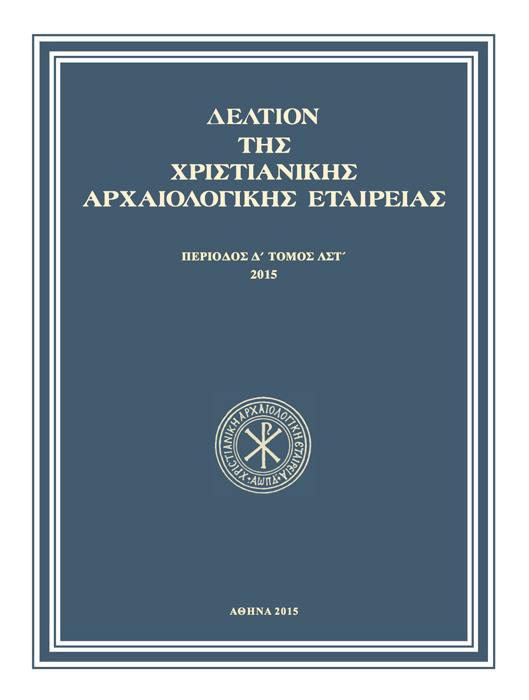Zur Motivgeschichte des s-Mahles auf sarkophagen, katakomben und byzantinischen Handschriften

Abstract
The representations of meal guests situated around a table in the form of the letter S (the so-called stibadium meals) were very popular in Roman art, especially in sarcophagi with hunting scenes. This iconographic motif passed in early Christian art without crucial changes, especially on sarcophagi and wall-paintings in Roman catacombs. However, there are certain slight differences to be observed in the latter, mainly regarding the number and gender of the participants. The funeral meals actually taking place in the Roman catacombs were most probably the source of inspiration for the representations of the so-called stibadium meals. Besides, this iconographic motif can also be found in other art forms, 6th-century mosaics and silver vessels. Finally, there are only few depictions of the Last Supper in Byzantine miniatures and wall paintings in which such an S-form table can be found.
Article Details
- How to Cite
-
PANELI, E. (2016). Zur Motivgeschichte des s-Mahles auf sarkophagen, katakomben und byzantinischen Handschriften. Deltion of the Christian Archaeological Society, 36, 245–262. https://doi.org/10.12681/dchae.1786
- Section
- Articles

This work is licensed under a Creative Commons Attribution-NonCommercial-ShareAlike 4.0 International License.
The copyright for articles in the journal Deltion of the Christian Archaeological Society (henceforth Deltion) is retained by the author(s), with first publication rights granted to the journal and to EIE/ EKT the right to store and communicate these articles to the public via its information infrastructures. By virtue of their appearance in this journal, articles are free to use with proper attribution for non-commercial uses under a ShareAlike obligation. The Christian Archaeological Society and EIE/EKT retain the worldwide right to reproduce, display, distribute, and use articles published in the Deltion in all formats and media, either separately or as part of collective works for the full term of copyright. This includes but is not limited to the right to publish articles in an issue of the Journal, copy and distribute individual reprints of the articles, authorize reproduction of articles in their entirety in another publication of the Christian Archaeological Society, and authorize reproduction and distribution of articles or abstracts thereof by means of computerized retrieval systems.


